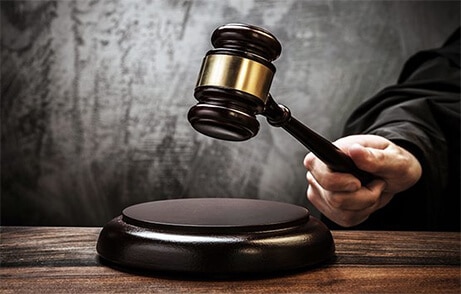1
Stage 1 – Intake:
The process starts with a telephone call to our office. You will go through a series of general questions with us regarding the accident, including the date, time, location, description, driving conditions, injuries sustained, and witnesses involved. A more in-depth questionnaire will also be emailed to you that will assist us in determining whether your case is a good fit for us. We will also request any supporting evidence you may have such as pictures, medical reports, estimates, etc. We understand that you may have limited time to devote to your injury claim so we will do whatever we can to work around your time constraints. Sometimes we request to meet with accident victims in person, other times we request a basic facetime video chat by phone instead of an in-person meeting. If we believe your case is a good fit for us we will then proceed to send you a contingency fee agreement that spells out the terms of our representation of you. Once the agreement is signed, the attorney-client relationship begins.
2
Stage 2 – Investigation:
This is the phase where information is collected before filing a lawsuit or contact the insurance company. Numerous written releases will be provided to you that will allow us to obtain records from various state and county agencies, healthcare providers, and employers. Letters of representation will be sent out to all these parties as well as the Defendant’s insurance company notify them that we are your attorneys in the matter. After that, police reports, and medical records are ordered by our office. Depending on the circumstances, a private investigator may also be retained by us to take pictures of the location of the accident, and interview witnesses that were there. The information collected will then be fully analyzed and used to gauge the merits of your case. Documents collected will also be used as evidence in support of your claims when drafting correspondence to the Defendant’s insurance company.
3
Stage 3 – Demand Letter:
Next, we will incorporate all the evidence and information gathered during the previous two stages into a demand letter to the Defendant’s insurance company that you will review. The letter will describe the chain of events that led up to the accident in question, the injuries you sustained, the medical bills you incurred, and so on and so forth. Pictures, medical reports from doctors, and other documentary evidence will also be attached to fully inform the insurance adjuster reviewing your claim about the facts and circumstances of your case. The letter will end with a demand stating the minimum amount of compensation you are willing to take to settle the matter without litigation. The letter will also provide a deadline to the insurance adjuster for accepting your settlement offer. You will have an opportunity to review the letter and work with us to determine a settlement offer that you feel comfortable with before the demand is mailed out. Upon reviewing the demand and the associated evidence, the insurance adjuster will either accept the offer and provide a settlement agreement for execution or reject the offer, necessitating a lawsuit.
4
Stage 4 – Initiation of Litigation:
If the claim is not resolved with the insurance adjuster, litigation is initiated. First, a complaint is filed that asserts various causes of action against the Defendant. The complaint also states the factual allegations surrounding the accident including any injuries you sustained as a result. The factual allegations are the product of the investigation that took place in the prior stages. The complaint and summons are served on the Defendant. The Defendant then has thirty days to respond to the complaint by either filing an answer or filing a motion. Typically if the Defendant has coverage, the insurance company will provide the defense attorney.
5
Stage 5 – Discovery:
Be warned, discovery is the investigative phase of a lawsuit. Each party is given a series of fact-finding tools such as requests for inspection, requests for admission, special and form interrogatories, as well as depositions. These tools allow parties to propound written questions on one another, request documents, or admit or deny statements drafted by the opposing party. Also, depositions permit the attorney of one side to ask in person questions from the other party under oath. Depositions are taken in the presence of a court reporter who transcribes all the testimony given. For many individuals discovery can be very stressful as they will be expected to spend (sometimes a substantial) time gathering documents or submitting themselves to the scrutiny of opposing counsel.
6
Stage 6 – Pretrial Motions:
Once all the facts and evidence have been collected by way of discovery, the parties use the evidence obtained to file motions for summary judgment to convince the judge presiding on the case to either throw out certain causes of action or grant them before trial. If the motions are not granted for either party the case proceeds to trial.
7
Stage 7 – Trial:
Jury trials starts with jury selection or “Voire Dire.” In bench trials, however, the judge presiding over the matter acts as the fact finder or jury and therefore no selection takes place. Jurors are interviewed and selected from a pool of jurors from the county in which the case was filed. Each side reads opening statements. Witnesses are called, evidence is presented to the jury which will ultimately make a decision on the case.

